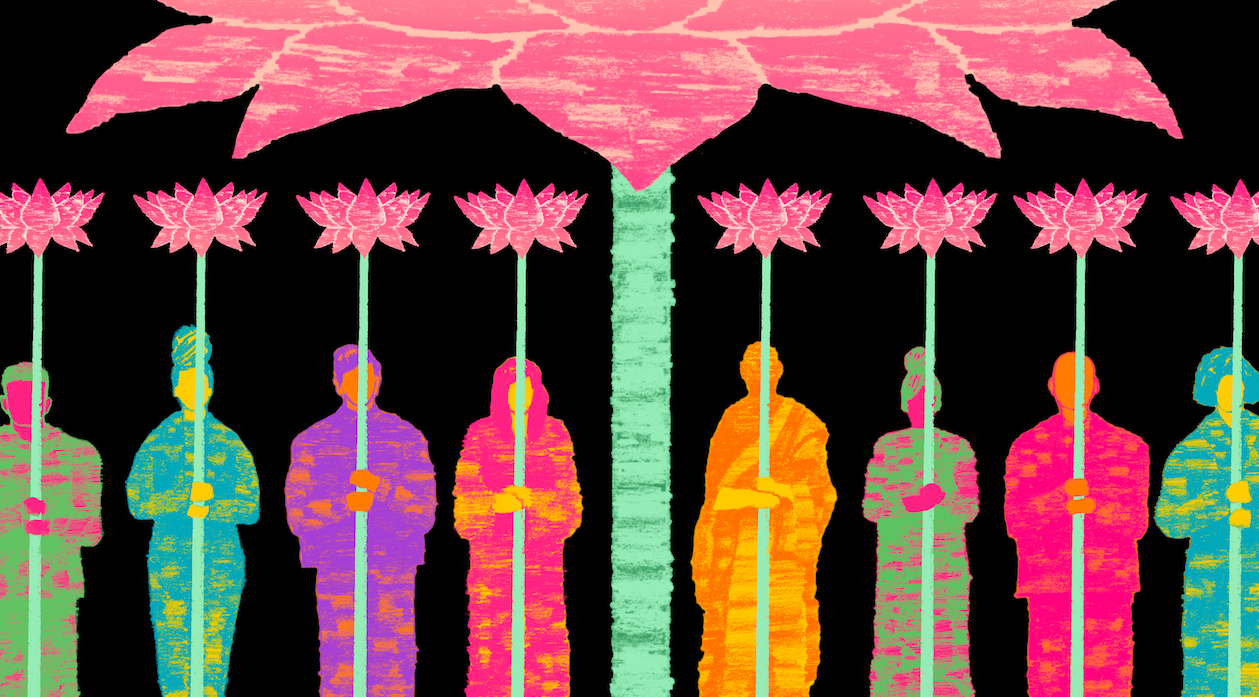The Great Way that benefits all sentient beings: motivated from the heart! An introduction to Mahayana Buddhism
An Introduction to Mahayana Buddhism Mahayana means ‘the great way’, which aims to benefit all people and all forms of life. This word comes from one of the ways a person can practice Buddhism. The motivation for their meditation,...
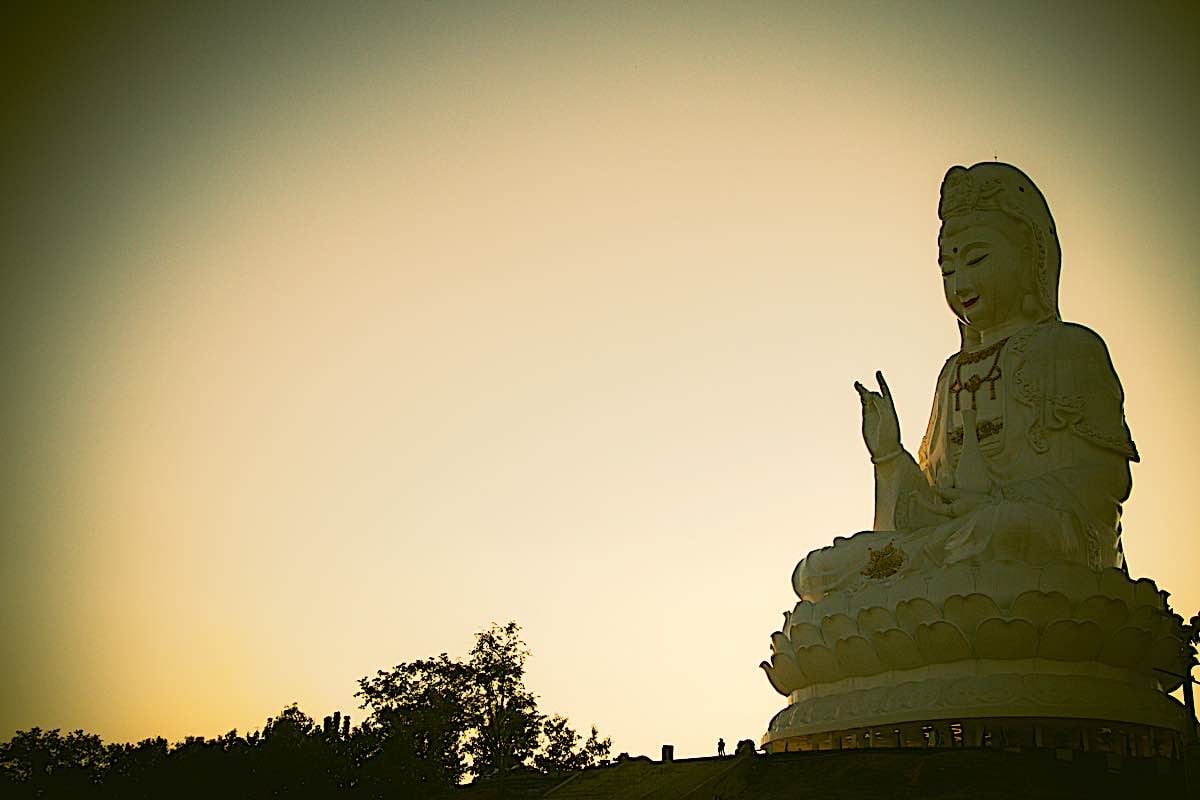
Mahayana means ‘the great way’, which aims to benefit all people and all forms of life. This word comes from one of the ways a person can practice Buddhism. The motivation for their meditation, prayers, ritual, and mantra can be not just for their own sake, but for the sake of all their precious family, and for the sake of all beings.
 Guan Yin Bodhisattva. For a feature on Guan Yin Bodhisattva, see>>
Guan Yin Bodhisattva. For a feature on Guan Yin Bodhisattva, see>>
By Jason Espada
From “Writing, music, and spoken word by Jason Espada”
For other wonderful features on Buddha Weekly by Jason Espada, see>>
The heart of the Mahayana motivation
To make it plain, if we first look just at this quality of a path being maha-yana alone – of it having this beautiful, loving, and all-embracing, universal nature – we can see a Mahayana Buddhism, Christianity, Hinduism, Islam, Taoism, or Indigenous spirituality. Every tradition then has methods we can use to accomplish our aims. A person who is living for others can even be without any tradition at all and, to my mind, still be a Mahayanist. This is not the usual way of speaking, I know, but it can help us know the nature of a supremely life-affirming path.
 Metta, and loving-kindness for all sentient beings are key characteristics of the Mahayana.
Metta, and loving-kindness for all sentient beings are key characteristics of the Mahayana.
Sometimes we can get lost in the struggles of our own personal life, or our culture and times. We can become a prisoner of the moment. The Great Way – the Mahayana motivation – then can help us to make our way through life’s difficulties. It holds whatever is happening in a larger context. Little things don’t bother us as much because we have a large view, one that is not just for ourselves alone, and we are also thinking for the long term.
The oh-so-common ‘eight worldly motivations’ that people have- around material gain and loss, pain and pleasure, fame and obscurity, praise and criticism – don’t move us any longer, and this comes as a great relief. Our lives become so much easier. As I hope we will all find out for ourselves, the Mahayana view also brings us maturity, and to genuine fulfillment as human beings.
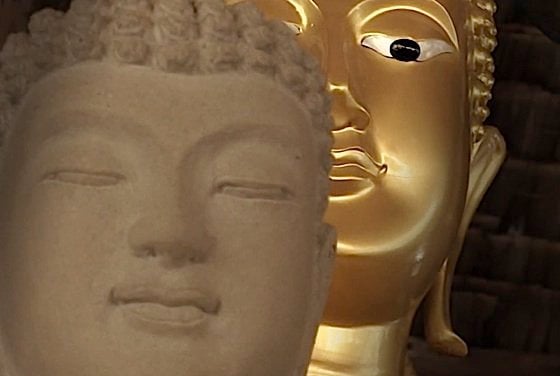 Buddha showed suffering beings a way to escape the Karmic Wheel of Suffering through the Eight-Fold Path: Right View, Right Intention, Right Speech, Right Action, Right Livelihood, Right Effort, Right Mindfulness, Right Concentration. Mahayana Buddhism focuses our practice on benefiting all sentient beings. When we meditate on Buddha’s image with concentration, or practice mindfulness, or pray for the release of suffering for all beings, or practice metta (kindness) and generosity, we generate positive karma.
Buddha showed suffering beings a way to escape the Karmic Wheel of Suffering through the Eight-Fold Path: Right View, Right Intention, Right Speech, Right Action, Right Livelihood, Right Effort, Right Mindfulness, Right Concentration. Mahayana Buddhism focuses our practice on benefiting all sentient beings. When we meditate on Buddha’s image with concentration, or practice mindfulness, or pray for the release of suffering for all beings, or practice metta (kindness) and generosity, we generate positive karma.
The history and resources of Mahayana Buddhism
Once we see this much of the universal motivation people can have, it helps to approach the history of Mahayana Buddhism. About 500 years after the Buddha’s physical passing from this world, collections of teachings such as the Perfection of Wisdom, Avatamsaka and Lotus Sutras were written down that described the practices and praised the great qualities of this path of universal benefit. Over the centuries, noble teachers such as Nagarjuna, Atisha, Asanga, Shantideva and others then taught methods to develop the loving, compassionate and liberating Mahayana mind. Those of us who have a connection can draw from this extensive body of inspired teachings.
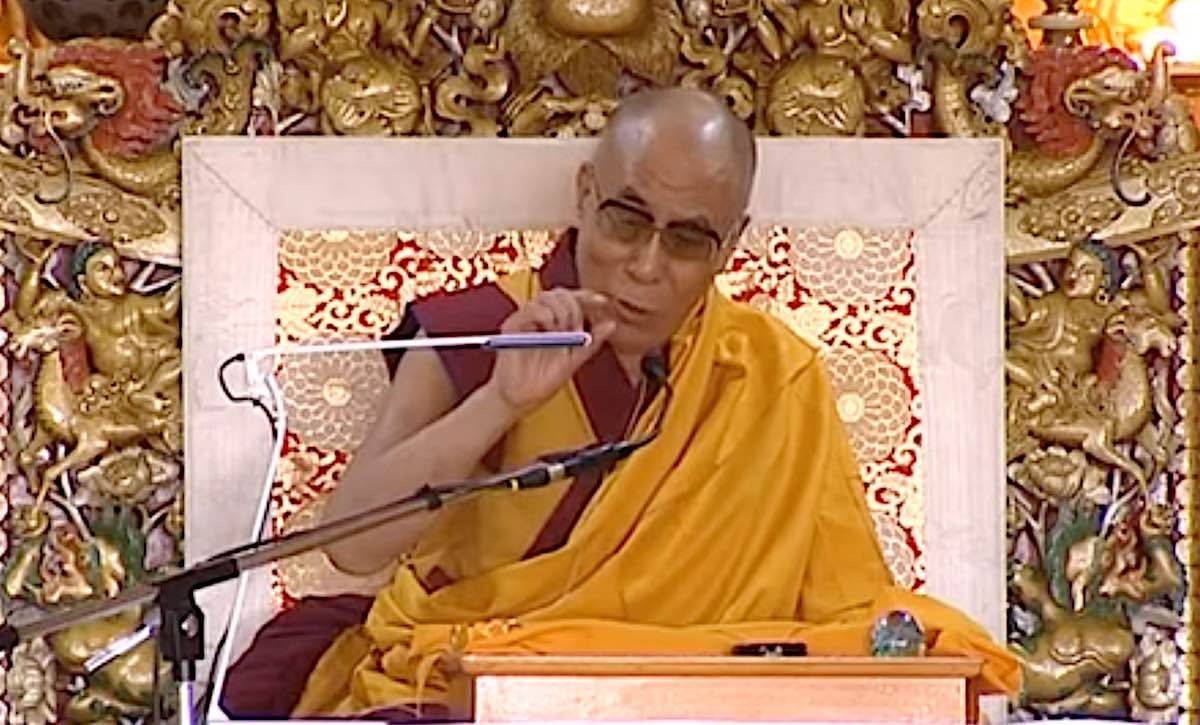 His Holiness the Dalai Lama teaching on the Diamond Sutra. (See video in the full feature.) Teaching Mahayana Sutras is an important, compassionate practice. His Holiness is considered to be an emanation of Avalokiteshvara on this earth, embodying the Bodhisattva of Compassion.
His Holiness the Dalai Lama teaching on the Diamond Sutra. (See video in the full feature.) Teaching Mahayana Sutras is an important, compassionate practice. His Holiness is considered to be an emanation of Avalokiteshvara on this earth, embodying the Bodhisattva of Compassion.
When we study Buddhism, we receive teachings on developing our inherent good qualities, and we also receive the blessings of our teachers and spiritual ancestors. Although it is not often talked about, there is an esoteric aspect to traditions as well. On the subtle planes, a tradition is a reservoir of blessing power, insight and inspiration built up over many generations. This sacred energy is a resource we can draw from. This is true of all the different Buddhist traditions and lineages. They each have unique and precious qualities we can know and benefit from. Every true religious tradition has produced also saints, and the influence of their realization surely outlasts their physical body. They are a blessing to this whole world, and especially to their lineage.
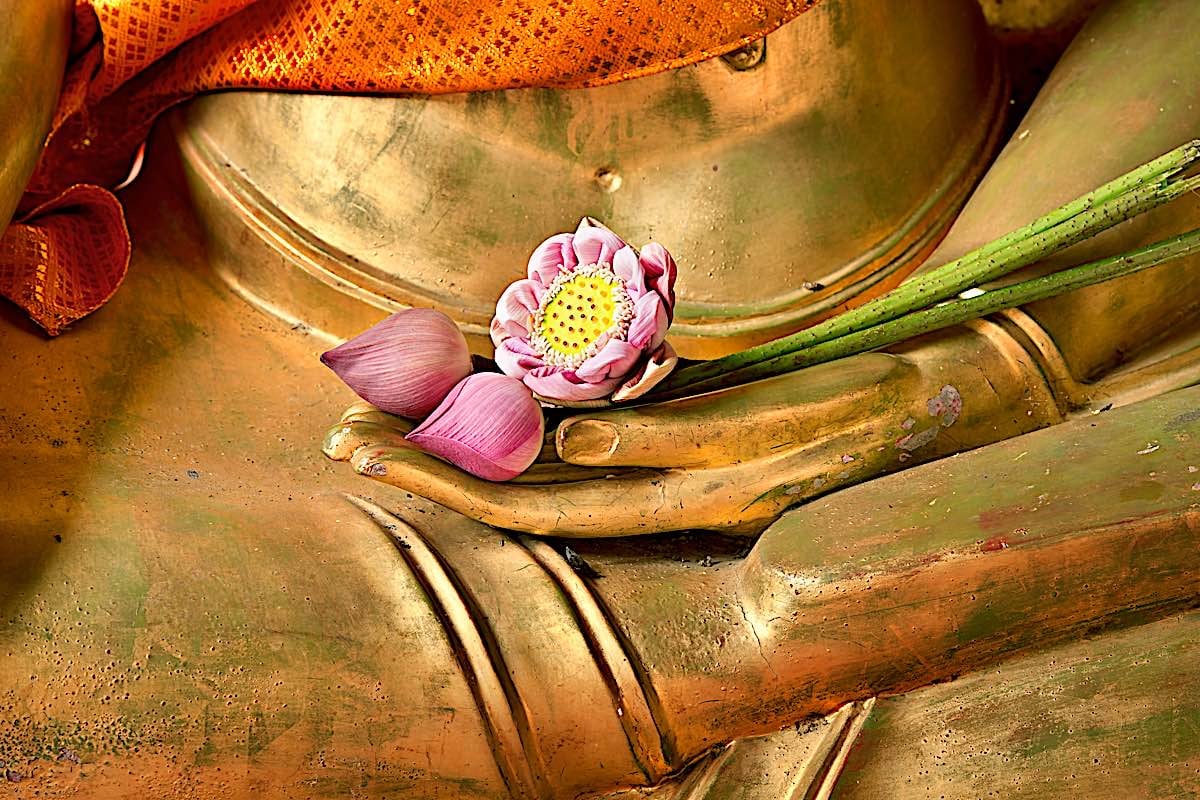 The Lotus is a famous symbol of compassionate activity. Most Buddhas and Bodhisattvas are seated or standing on a Lotus throne. The Lotus Sutra is an important — and comprehensive — Mahayana Sutra. Many stories expressing the ideals of compassion for all beings are expressed in the seven parables found in seven chapters of the lengthy Lotus Sutra. Avalokiteshvara’s most important sutra is actually chapter 25 in the Lotus Sutra. For a feature on the parables of the Lotus Sutra, see>>
The Lotus is a famous symbol of compassionate activity. Most Buddhas and Bodhisattvas are seated or standing on a Lotus throne. The Lotus Sutra is an important — and comprehensive — Mahayana Sutra. Many stories expressing the ideals of compassion for all beings are expressed in the seven parables found in seven chapters of the lengthy Lotus Sutra. Avalokiteshvara’s most important sutra is actually chapter 25 in the Lotus Sutra. For a feature on the parables of the Lotus Sutra, see>>
The development of the awakened heart
The nature of the awakened heart, everywhere it is found, is to help others as much as possible. In it, two aspects are always present, those of loving compassion, and understanding. Compassion is vitally important here. Without it, there will be no urgency to put an end to suffering. If we have the capacity to hold in our heart the awareness of what is difficult or tragic, even for a short while, it can be a powerful force for good in our lives, in the lives of all those we love, and in our world.
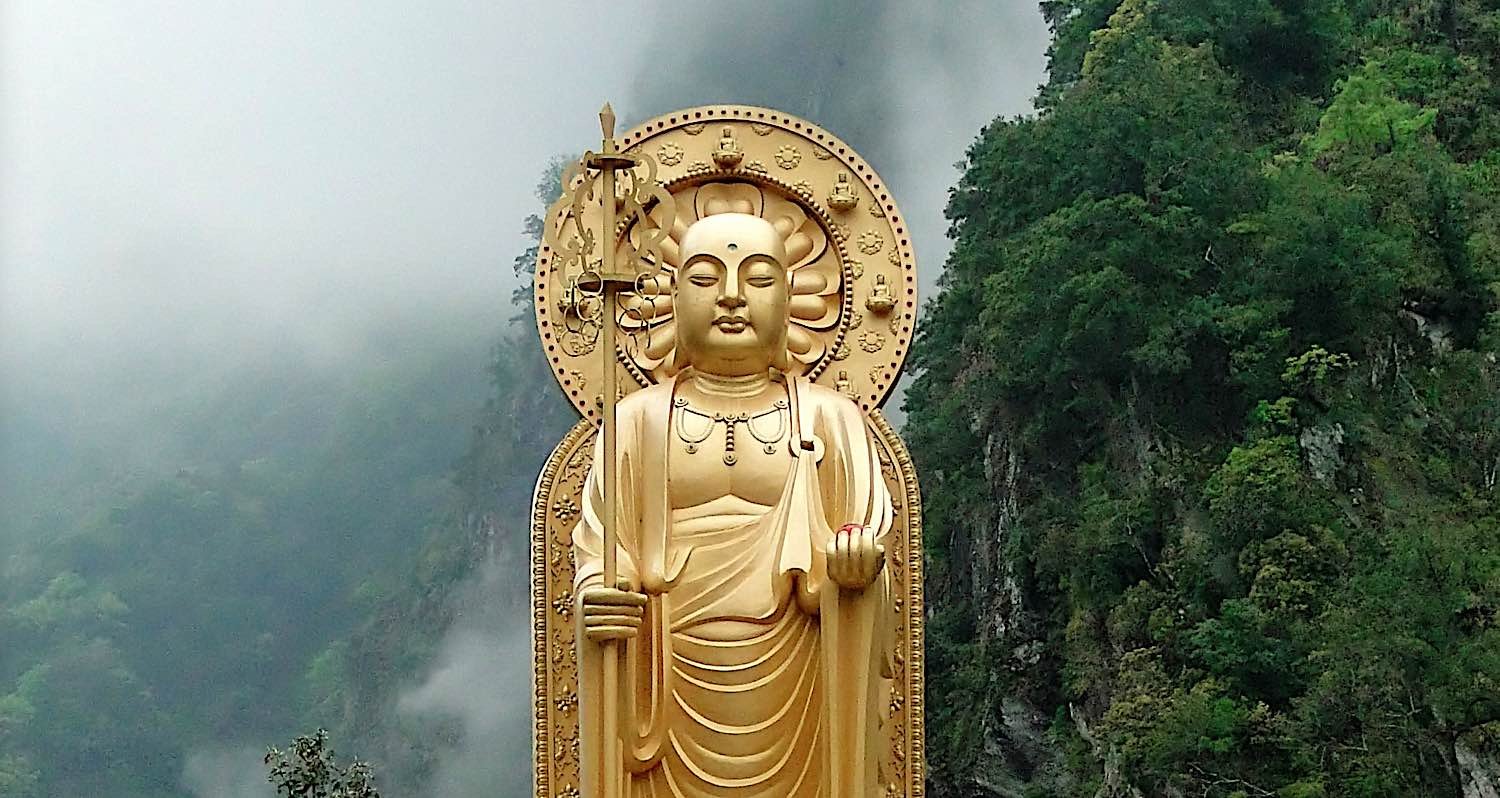 Giant statue of Bodhisattva Ksitigarbha. Ksitigarbha also exemplifies the Bodhisattva idea. In his sutras, he is depicted endless rescuing beings from the suffering of the hell realms (and other realms). He is a key and important practice all over Asia. For a feature on Bodhisattva Ksitigarbha, see>>
Giant statue of Bodhisattva Ksitigarbha. Ksitigarbha also exemplifies the Bodhisattva idea. In his sutras, he is depicted endless rescuing beings from the suffering of the hell realms (and other realms). He is a key and important practice all over Asia. For a feature on Bodhisattva Ksitigarbha, see>>
The core of the Mahayana Buddhist motivation is called bodhicitta, the awakening mind. The view in this Tradition is that the best thing we can do for others is to help them to become free from all their suffering and its causes. To do this we need to awaken and liberate ourselves, then we can help others to reach that same state. Bodhicitta is called the sole thought on everybody’s side.
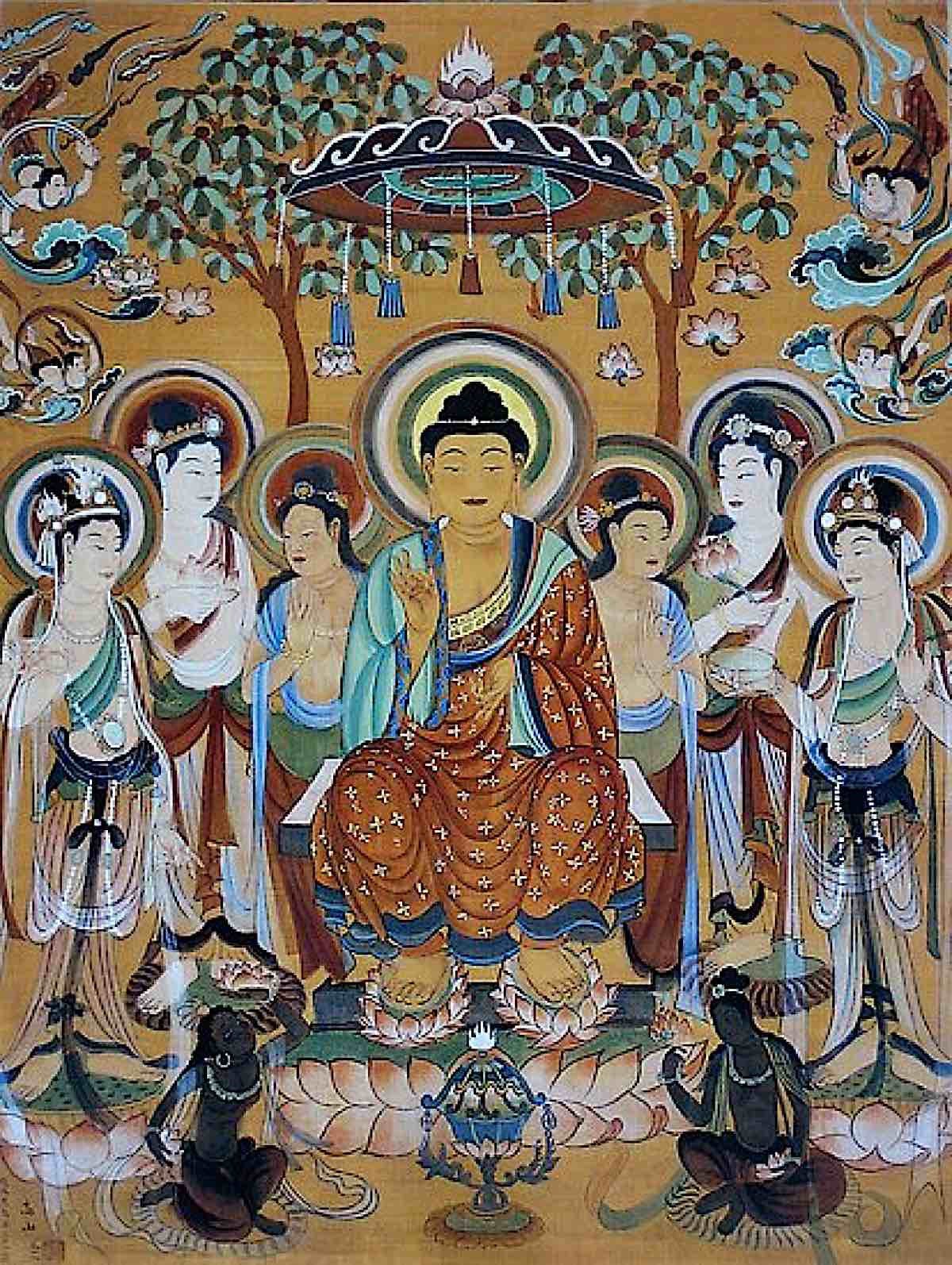 The Bodhisattvas surrounding Buddha.
The Bodhisattvas surrounding Buddha.
A bodhisattva, literally an ‘awakening being’ is someone who is dedicated to the temporal and ultimate benefit of all beings, providing them with all they need and wish for. The bodhisattva vow is traditionally phrased as May I become a Buddha in order to lead all others to that very same state. This is the heart of the Mahayana. With this, they say, we ‘enter the family of the Buddhas’. Its motivation is expressed in this way
May I cause the pacification
Of all sentient beings afflictions
And in the poetic language of Shantideva
As long as diseases afflict living beings,
may I be the doctor, the medicine,
and also the nurse who restores them to health
May I fall as rain to increase the harvests that must feed living beings
and in times of dire famine,
may I myself be food and drink
For as long as space exists,
and for as long as living beings remain,
may I too abide,
to dispel the misery of the world
As one teacher said, Strive to give the taste of bliss to others!
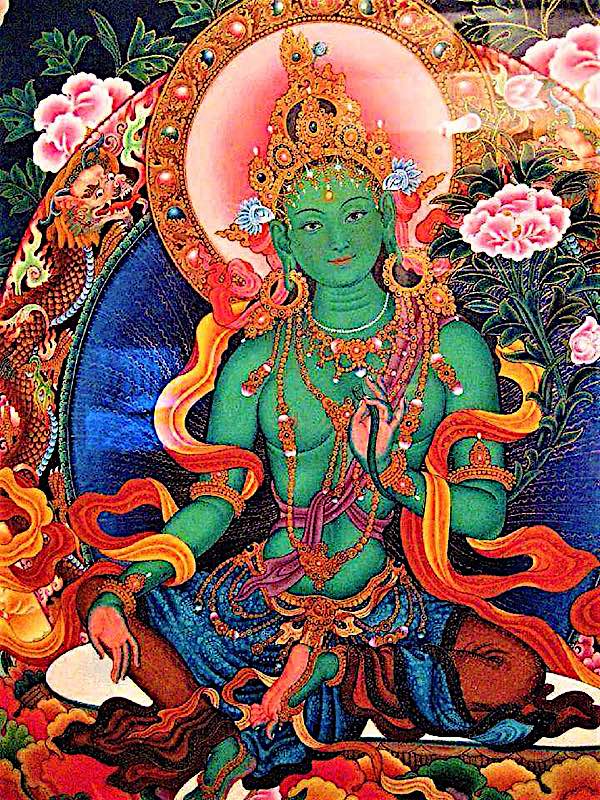 One of the most popular Bodhisattvas is Green Tara, sometimes nicknamed “Mother of the all the Buddhas.” She embodies the activities of all the Buddhas and Bodhisattva. Her popularity is due to her boundless compassionate activities, which include rescues from danger, illness and calamity. For a full section of Green Tara features on Buddha Weekly, see>>
One of the most popular Bodhisattvas is Green Tara, sometimes nicknamed “Mother of the all the Buddhas.” She embodies the activities of all the Buddhas and Bodhisattva. Her popularity is due to her boundless compassionate activities, which include rescues from danger, illness and calamity. For a full section of Green Tara features on Buddha Weekly, see>>
A real force in our own lives
The Chinese Mahayana Buddhist teachings speak of something they call ‘vow power’. This is the deep motivation that all the Buddhas and Bodhisattvas have to help others, guided by wisdom and compassion. This is also something that can become a very real force in our own life. It has the potential to open us up, and to help us awaken our inner resources, of great strength, patience, courage, clarity, peace and joy.
Tara is the perfect exemplar of the Bodhisattva activity. Listen and recite along with Jason Espada, with the popular short prayer “Song of Longing for Tara the Infallible” — at the end is the 21 praises to Tara:
We should realize at this point, as Lama Yeshe said, that we don’t have to have completed the path before we can begin to act. He taught us that we should just help others as much as we can, always working to deepen our wisdom, and the effectiveness of our work.
Em Ah Ho! How wondrous!
May all beings benefit.
May we all learn about and awaken the motivation to be of universal benefit,
find a path that suits us best,
and then practice diligently to actualize all of our noble aims
May all beings everywhere be free from suffering and the causes of suffering
May all beings have happiness and the causes of happiness flourishing
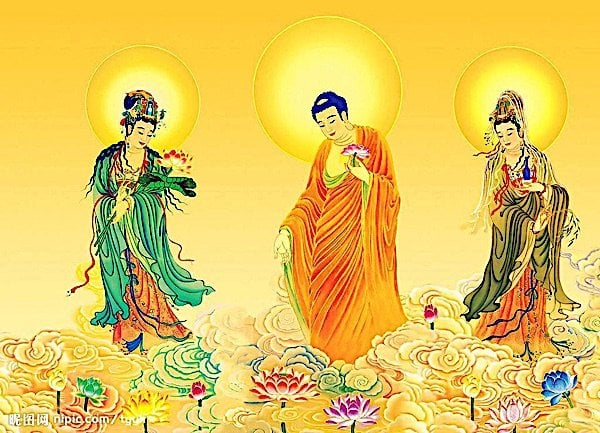 Amitabha Buddha and two Bodhisattvas.
Amitabha Buddha and two Bodhisattvas.
 Koichiko
Koichiko 











